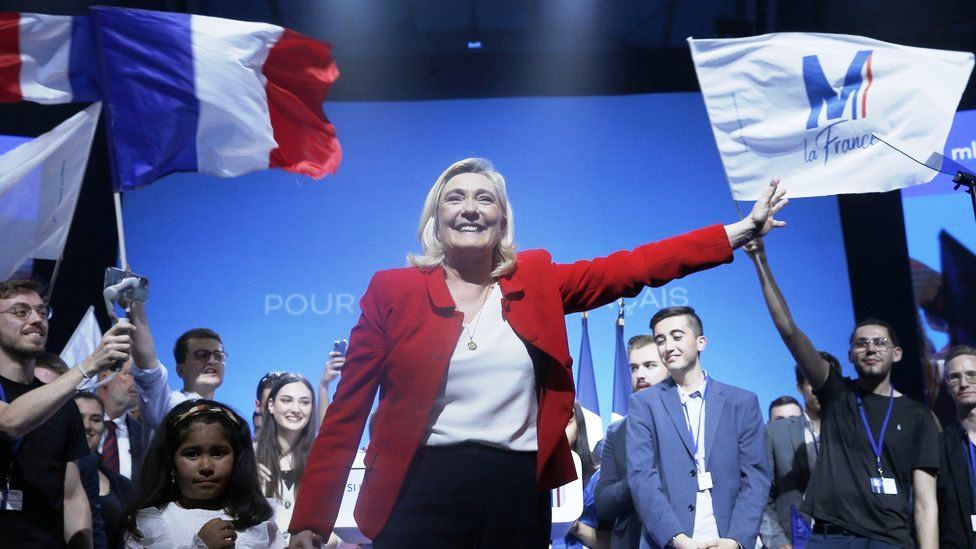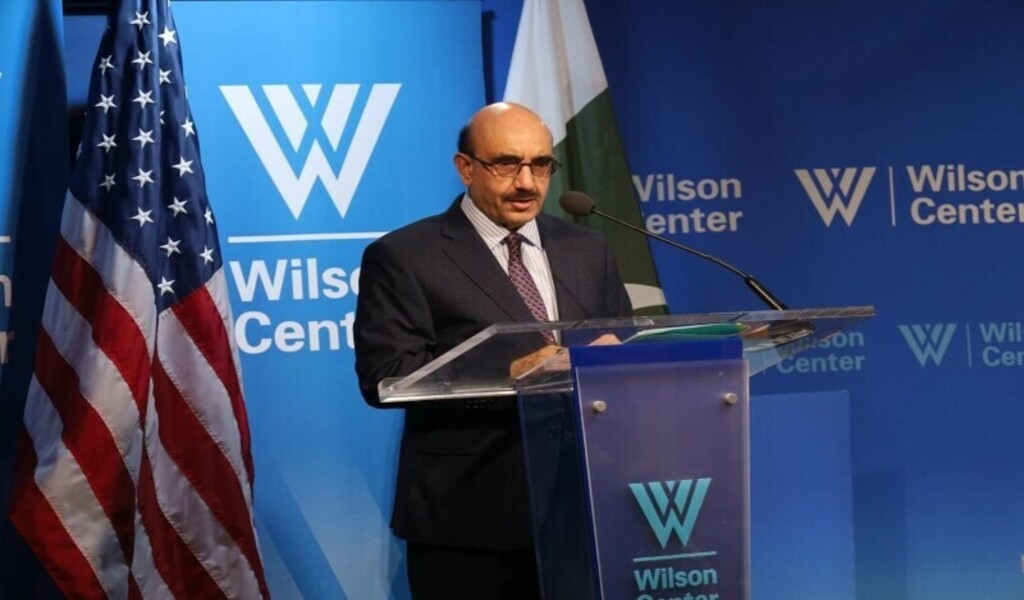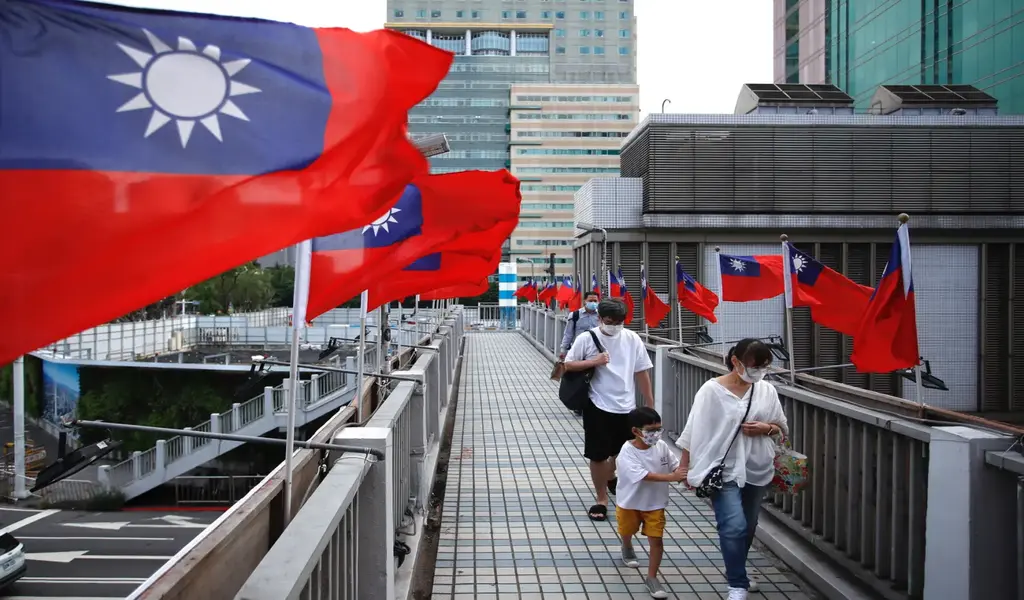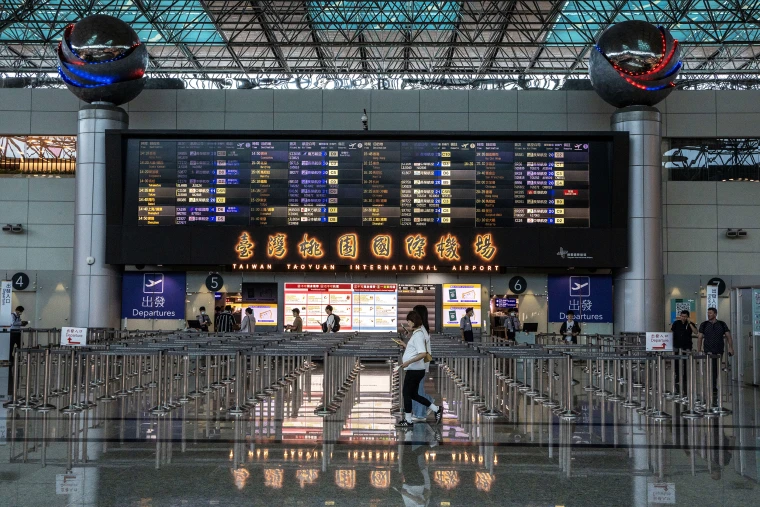World News
North Korea Boasts New Missile Can Carry Heavy Nuke

South Koreans watch a news broadcast on North Korea’s recent ballistic missile launch at a train station in Seoul, South Korea, on May 14.(EPA photo)
–
PYONGYANG – North Korea said on Monday the missile it launched over the weekend was a new type of long-range ballistic rocket that could carry a heavy nuclear warhead.
North Korean propaganda must be considered with wariness, but if confirmed the claim marks another big step forward in the country’s escalating efforts to field a nuclear-tipped missile capable of reaching the US mainland. Outside experts don’t believe the North can do that yet, but each new test pushes them closer to the goal.
The launch on Sunday is an immediate challenge to South Korea’s new leader, a liberal elected just five days earlier who expressed a desire to improve relations with North Korea. The country’s push to boost its weapons program also makes it one of the Trump administration’s most urgent foreign policy worries.
The missile flew for half an hour and reached an unusually high altitude before landing in the Sea of Japan, the South Korean, Japanese and US militaries said. Tokyo said the flight pattern could indicate a new type of missile.
North Korea’s official Korean Central News Agency called the missile a “new ground-to-ground medium long-range strategic ballistic rocket Hwasong-12” that was “capable of carrying a large-size heavy nuclear warhead”. Leader Kim Jong Un was said to have witnessed the test and “hugged officials in the field of rocket research, saying that they worked hard to achieve a great thing”, according to KCNA.
The launch jeopardizes new South Korean President Moon Jae-in’s willingness to talk to the North, and came as US, Japanese and European navies gather for joint war games in the Pacific.
“The president expressed deep regret over the fact that this reckless provocation … occurred just days after a new government was launched in South Korea,” senior presidential secretary Yoon Young-chan said. “The president said we are leaving open the possibility of dialogue with North Korea, but we should sternly deal with a provocation to prevent North Korea from miscalculating.”
Moon, South Korea’s first liberal leader in nearly a decade, said as he took his oath of office last week that he would be willing to visit the North if the circumstances were right.
The UN Security Council is to hold closed consultations about the launch on Tuesday afternoon, according to the UN Mission for Uruguay, which holds the council presidency this month.
US ambassador Nikki Haley said on ABC television that the US has been working well with China, Pyongyang’s closest ally. She mentioned the possibility of new sanctions against North Korea, including on oil imports.
The Security Council has adopted six increasingly tougher sanctions resolutions against North Korea.
US President Donald Trump’s administration has called North Korean ballistic and nuclear efforts unacceptable, but it has swung between threats of military action and offers to talk as it formulates a policy.
While Trump has said he’d be “honoured” to talk with leader Kim Jong Un under favorable conditions, Haley seemed to rule out the possibility. “Having a missile test is not the way to sit down with the president, because he’s absolutely not going to do it,” she told ABC.
Japanese officials said the missile flew for about 30 minutes, traveling about 800 kilometres and reaching an unusually high altitude of 2,000km. South Korea’s Joint Chiefs of Staff said it was launched from near Kusong, in North Phyongan province.
The US Pacific Command said that “the flight is not consistent with an intercontinental ballistic missile”, a technology the North is believed to have tested clandestinely by launching rockets to put satellites in orbit.
David Wright, co-director of the Global Security Program at the Union of Concerned Scientists, said the missile could have a range of 4,500km if flown on a standard, instead of a lofted, trajectory, considerably longer than Pyongyang’s current missiles. He said Sunday’s launch, the seventh such firing by North Korea this year, may have been of a new mobile, two-stage liquid-fuelled missile North Korea displayed in a huge April 15 military parade.
Japanese Prime Minister Shinzo Abe told reporters that the launch was “absolutely unacceptable” and that Japan would respond resolutely.
The White House took note of the missile landing close to Russia’s Pacific coast and said in a statement that North Korea has been “a flagrant menace for far too long.”
The statement said Washington maintains its “ironclad commitment” to stand with its allies in the face of the serious threat posed by North Korea. The latest “provocation” should serve as a call for all nations to implement far stronger sanctions against the North, it said.
Outside militaries and experts will closely analyze what the North fired. While Pyongyang regularly tests shorter-range missiles, it is also working to master long-range missiles.
Japanese Defense Minister Tomomi Inada suggested the missile might have been on a “lofted” trajectory, meaning it could fly a flatter path and have a far longer range. Japan’s Kyodo News agency, citing unidentified sources, said the missile may be capable of reaching 4,000km at a normal trajectory.
Italian Premier Paolo Gentiloni said the G-7 summit his country is hosting later this month would discuss how to deal with the risk North Korea’s missile launchings pose to global security.
“It’s a serious problem for global stability and security, and I’m convinced that the upcoming G-7, in friendship, will contribute to resolving this issue,” he said in Beijing.
The launch came as troops from the US, Japan and two European nations gather near Guam for drills that are partly a message to North Korea. The USS Carl Vinson, an aircraft supercarrier, is also engaging with South Korean navy ships in waters off the Korean Peninsula, according to Seoul’s Defence Ministry.
World News
Marine Le Pen’s National Rally Wins the First Round in France 2024 Election

Exit polls in France showed that Marine Le Pen’s right-wing National Rally (RN) party made huge gains to win the first round of election on Sunday. However, the final outcome will depend on how people trade votes in the days before next week’s run-off.
Exit polls from Ipsos, Ifop, OpinionWay, and Elabe showed that the RN got about 34% of the vote. This was a big loss for President Emmanuel Macron, who called the early election after his party lost badly in the European Parliament elections earlier this month.
The National Rally (RN) easily won more votes than its opponents on the left and center, including Macron’s Together group, whose bloc was predicted to get 20.5% to 23% of the vote. Exit polls showed that the New Popular Front (NFP), a hastily put together left-wing alliance, would get about 29% of the vote.
The results of the exit polls matched what people said in polls before the election, which made Le Pen’s fans very happy. But they didn’t say for sure if the anti-immigrant, anti-EU National Rally (RN) will be able to “cohabit” with the pro-EU Macron in a government after the runoff election next Sunday.
Voters in France Angry at Macron
Many French people have looked down on the National Rally (RN) for a long time, but now it is closer to power than it has ever been. A party known for racism and antisemitism has tried to clean up its image, and it has worked. Voters are angry at Macron, the high cost of living, and rising concerns about immigration.
Fans of Marine Le Pen waved French flags and sang the Marseillaise in the northern French district of Henin-Beaumont. The crowd cheered as Le Pen said, “The French have shown they are ready to turn the page on a power that is disrespectful and destructive.”
The National Rally’s chances of taking power next week will rest on what political deals its opponents make in the next few days. Right-wing and left-wing parties used to work together to keep the National Rally (RN) out of power, but the “republican front,” which refers to this group, is less stable than ever.
If no candidate gets 50% of the vote in the first round, the top two candidates and anyone else with 12.5% of the registered voters immediately move on to the second round. The district goes to the person who gets the most votes in the runoff.
France is likely to have a record number of three-way runoffs because so many people voted on Sunday. Experts say that these are much better for the National Rally (RN) than two-way games. Almost right away on Sunday night, the horse trade began.
Macron asked people to support candidates who are “clearly republican and democratic.” Based on what he has said recently, this would rule out candidates from the National Rally (RN) and the hard-left France Unbowed (LFI) party. Leaders on the far left and the center left both asked their third-placed candidates to drop out.
Minority government
Jean-Luc Melenchon, leader of France Unbowed, said, “Our rule is simple and clear: not a single more vote for the National Rally.” But the center-right Republicans party, which split before the vote when some of its members joined the RN, didn’t say anything.
The president of the RN party, Jordan Bardella, who is 28 years old, said he was ready to be prime minister if his party gets a majority of seats. He has said he won’t try to make a minority government, and neither Macron nor the communist NFP will work with him.
“I will be a “cohabitation” Prime Minister, respectful of the constitution and of the office of President of the Republic, but uncompromising about the policies we will implement,” he said.
A few thousand anti-RN protesters met in Paris’s Republique square on Sunday night for a rally of the leftist alliance. The mood was gloomy.
Niya Khaldi, a 33-year-old teacher, said that the RN’s good results made her feel “disgust, sadness, and fear.”
“This is not how I normally act,” she said. “I think I came to reassure myself, to not feel alone.”
Election Runoff
The result on Sunday didn’t have much of an effect on the market. In early Asia-Pacific trade, the euro gained about 0.23%. Fiona Cincotta, a senior markets expert at City Index in London, said she was glad the outcome “didn’t come as a surprise.”
“Le Pen had a slightly smaller margin than some of the polls had pointed to, which may have helped the euro a little bit higher on the open,” she noted. “Now everyone is waiting for July 7 to see if the second round supports a clear majority or not. So it does feel like we’re on the edge of something.”
Some pollsters thought the RN would win the most seats in the National Assembly, but Elabe was the only one who thought the party would win all 289 seats in the run-off. Seat projections made after the first round of voting are often very wrong, and this race is no exception.
On Sunday night, Reuters reported there were no final results for the whole country yet, but they were due in the next few hours. In France, exit polls have usually been very accurate.
Voter turnout was high compared to previous parliamentary elections. This shows how passionate people are about politics after Macron made the shocking and politically risky decision to call a vote in parliament.
Mathieu Gallard, research head at Ipsos France, said that at 1500 GMT, nearly 60% of voters had turned out, up from 39.42% two years earlier. This was the highest comparable turnout since the 1986 legislative vote. It wasn’t clear when the official number of people who voted would be changed.
World News
Pakistan Seeks US Support for Counter-Terrorism Operation Azm-e-Istehkam

(CTN News) – Pakistan’s Ambassador to the United States, Masood Khan, has urged Washington to provide Pakistan with sophisticated small arms and communication equipment to ensure the success of Operation Azm-e-Istehkam, a newly approved counter-terrorism initiative in the country.
The federal government recently approved the reinvigorated national counter-terrorism drive, which comprises three components: doctrinal, societal, and operational.
Ambassador Khan noted that work on the first two phases has already begun, with the third phase set to be implemented soon.
Addressing US policymakers, scholars, and corporate leaders at the Wilson Center in Washington, Khan emphasized the importance of strong security links, enhanced intelligence cooperation, and the resumption of sales of advanced military platforms between Pakistan and the US.
He argued that this is crucial for regional security and countering the rising tide of terrorism, which also threatens the interests of the US and its allies.
“Pakistan has launched Azm-i-Istehkam […] to oppose and dismantle terrorist networks. For that, we need sophisticated small arms and communication equipment,” said Ambassador Khan.
Pakistan–United States relations
The ambassador observed that the prospects of Pakistan-United States relations were bright, stating that the two countries “share values, our security and economic interests are interwoven, and it is the aspiration of our two peoples that strengthens our ties.”
He invited US investors and businesses to explore Pakistan’s potential in terms of demographic dividend, technological advancements, and market opportunities.
Khan also suggested that the US should consider Pakistan as a partner in its diplomatic efforts in Kabul and collaborate on counterterrorism and the rights of women and girls in Afghanistan.
He stressed that the bilateral relationship should be based on ground realities and not be hindered by a few issues.
“We should not base our engagement on the incongruity of expectations.
Our ties should be anchored in ground realities, even as we aim for stronger security and economic partnerships. Secondly, one or two issues should not hold the entire relationship hostage,” said the ambassador.
World News
China Urges Taiwanese to Visit Mainland ‘Without Worry’ Despite Execution Threat

China has reassured Taiwanese citizens that they can visit the mainland “without the slightest worry”, despite Taiwan raising its travel alert to the second-highest level in response to Beijing’s new judicial guidelines targeting supporters of Taiwanese independence.
Last week, China published guidelines that could impose the death penalty for “particularly serious” cases involving “diehard” advocates of Taiwanese independence.
In response, Taiwan’s government urged the public to avoid “unnecessary travel” to mainland China and Hong Kong, and raised its travel warning to the “orange” level.
However, Zhu Fenglian, a spokeswoman for a Chinese body overseeing Taiwan affairs, stated that the new directives are “aimed solely at the very small number of supporters of ‘Taiwan independence’, who are engaged in malicious acts and utterances”.
She emphasized that “the vast majority of Taiwan compatriots involved in cross-strait exchanges and cooperation do not need to have the slightest worry when they come to or leave mainland China”.
“They can arrive in high spirits and leave fully satisfied with their stay,” Zhu added.

What’s Behind The China-Taiwan Tensions?
The tensions stem from the longstanding dispute over Taiwan’s status. Mainland China claims Taiwan as part of its territory and has refused to rule out using force to bring the democratic island under its control, while Taiwan sees itself as a sovereign state.
Beijing has not conducted top-level communications with Taipei since 2016, when the Democratic Progressive Party’s Tsai Ing-wen became Taiwan’s leader. China has since branded her successor, President Lai Ching-te, a “dangerous separatist”.
“The DPP authorities have fabricated excuses to deceive the people on the island and incite confrontation and opposition,” Zhu said in her statement.
Despite the political tensions, many Taiwanese continue to travel to mainland China for work, study, or business.
-

 News3 years ago
News3 years agoLet’s Know About Ultra High Net Worth Individual
-
Entertainment2 years ago
Mabelle Prior: The Voice of Hope, Resilience, and Diversity Inspiring Generations
-

 Health3 years ago
Health3 years agoHow Much Ivermectin Should You Take?
-

 Tech2 years ago
Tech2 years agoTop Forex Brokers of 2023: Reviews and Analysis for Successful Trading
-

 Lifestyles2 years ago
Lifestyles2 years agoAries Soulmate Signs
-

 Movies2 years ago
Movies2 years agoWhat Should I Do If Disney Plus Keeps Logging Me Out of TV?
-

 Health3 years ago
Health3 years agoCan I Buy Ivermectin Without A Prescription in the USA?
-

 Learning2 years ago
Learning2 years agoVirtual Numbers: What Are They For?
